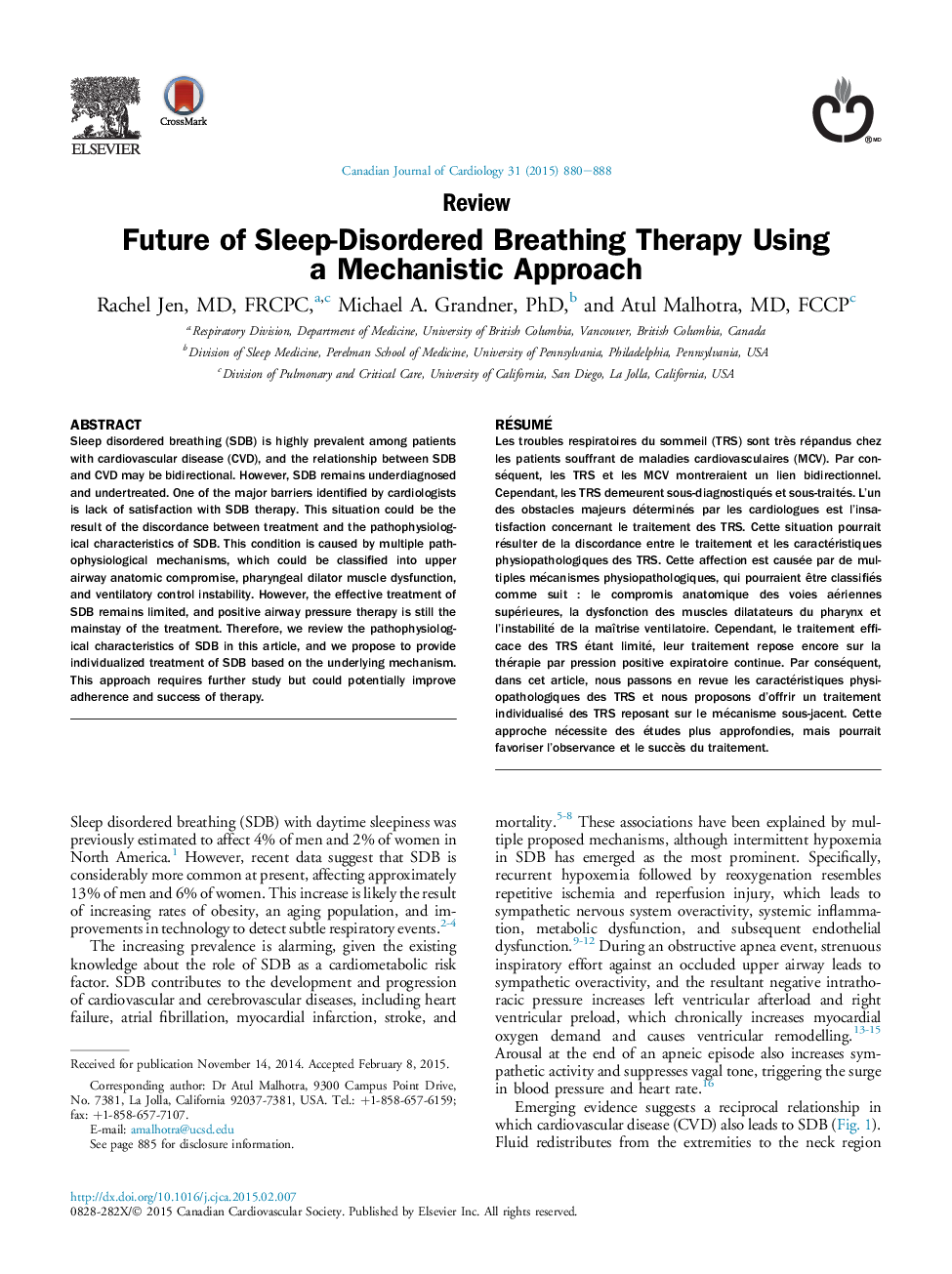| کد مقاله | کد نشریه | سال انتشار | مقاله انگلیسی | نسخه تمام متن |
|---|---|---|---|---|
| 2731697 | 1566496 | 2015 | 9 صفحه PDF | دانلود رایگان |
Sleep disordered breathing (SDB) is highly prevalent among patients with cardiovascular disease (CVD), and the relationship between SDB and CVD may be bidirectional. However, SDB remains underdiagnosed and undertreated. One of the major barriers identified by cardiologists is lack of satisfaction with SDB therapy. This situation could be the result of the discordance between treatment and the pathophysiological characteristics of SDB. This condition is caused by multiple pathophysiological mechanisms, which could be classified into upper airway anatomic compromise, pharyngeal dilator muscle dysfunction, and ventilatory control instability. However, the effective treatment of SDB remains limited, and positive airway pressure therapy is still the mainstay of the treatment. Therefore, we review the pathophysiological characteristics of SDB in this article, and we propose to provide individualized treatment of SDB based on the underlying mechanism. This approach requires further study but could potentially improve adherence and success of therapy.
RésuméLes troubles respiratoires du sommeil (TRS) sont très répandus chez les patients souffrant de maladies cardiovasculaires (MCV). Par conséquent, les TRS et les MCV montreraient un lien bidirectionnel. Cependant, les TRS demeurent sous-diagnostiqués et sous-traités. L’un des obstacles majeurs déterminés par les cardiologues est l’insatisfaction concernant le traitement des TRS. Cette situation pourrait résulter de la discordance entre le traitement et les caractéristiques physiopathologiques des TRS. Cette affection est causée par de multiples mécanismes physiopathologiques, qui pourraient être classifiés comme suit : le compromis anatomique des voies aériennes supérieures, la dysfonction des muscles dilatateurs du pharynx et l’instabilité de la maîtrise ventilatoire. Cependant, le traitement efficace des TRS étant limité, leur traitement repose encore sur la thérapie par pression positive expiratoire continue. Par conséquent, dans cet article, nous passons en revue les caractéristiques physiopathologiques des TRS et nous proposons d’offrir un traitement individualisé des TRS reposant sur le mécanisme sous-jacent. Cette approche nécessite des études plus approfondies, mais pourrait favoriser l’observance et le succès du traitement.
Journal: Canadian Journal of Cardiology - Volume 31, Issue 7, July 2015, Pages 880–888
